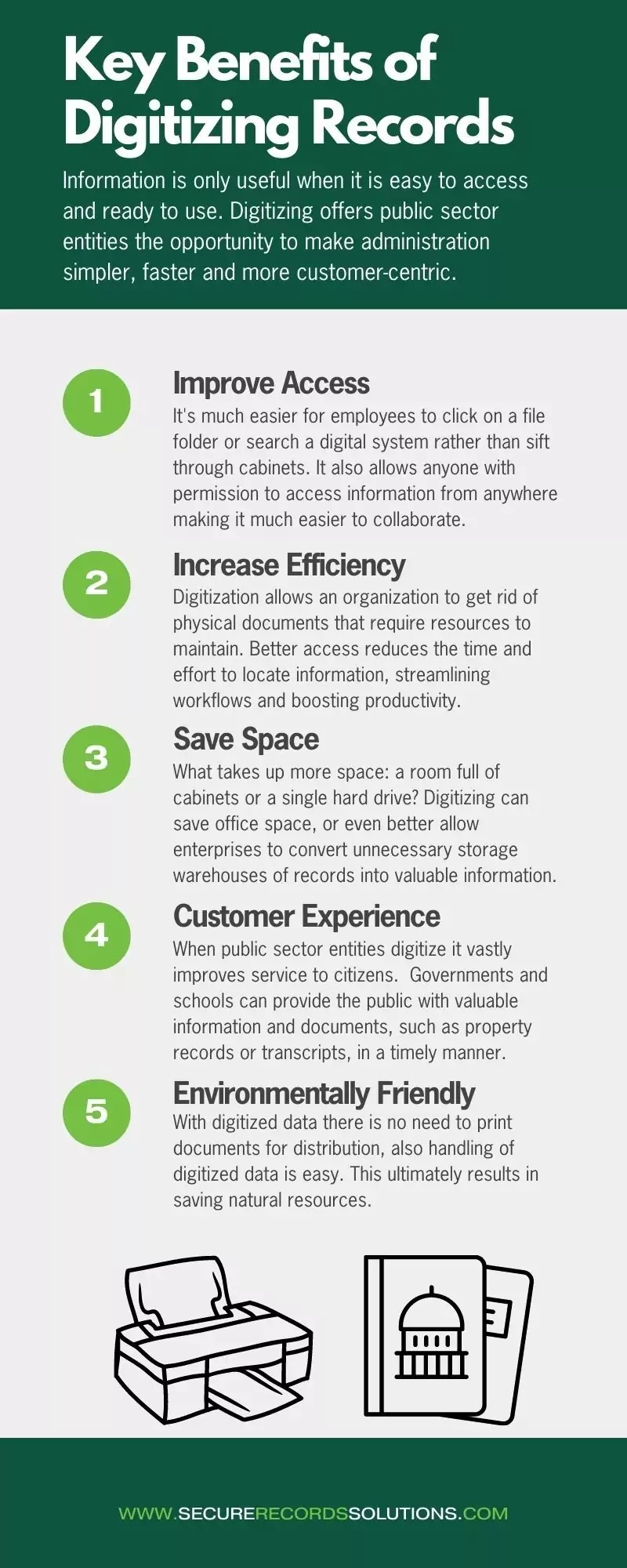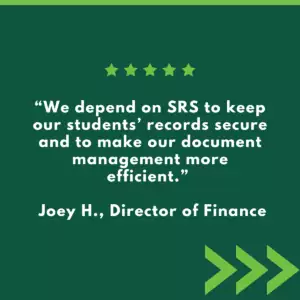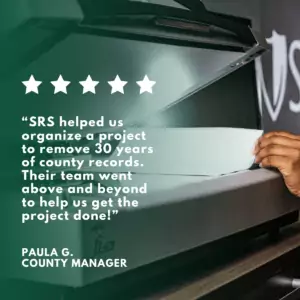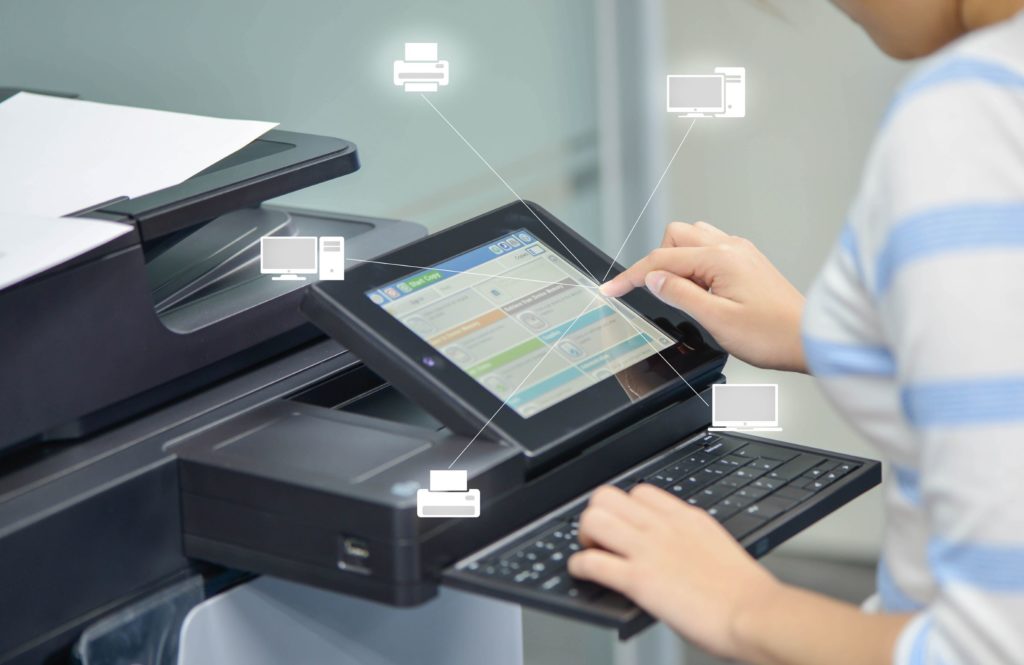
In the wake of the COVID-19 pandemic, Congress passed multiple pieces of legislation to stimulate economic recovery and growth. A portion of the funding was divided across all levels of government – city, county, state, and tribal.
The legislation designated various uses for the funds. This includes federal funding for digitization of records in school systems and across county and city governments.
Digitization is revolutionizing public service delivery, creating a more efficient and customer-centric approach. McKinsey reports that digitization could unlock over $3.5 trillion of economic value for the government and public sector. Digitizing makes administration simpler, faster, and more citizen friendly.
Shifting to digital records allows for more efficient document management. Meanwhile, management protocols protect vital records and retain quick access to the records.
What’s more, digital records allow record-holders to free up storage space and eliminate the fees associated with storing and managing paper documents. And ultimately, digitizing now means creating protocols for paperless record-keeping in the future.
We all recognize the trend towards digitization in the public and private sector. Digitization is better for processes, people and the planet. Unfortunately, many have been unable to engage with such projects due to budget constraints – until now.
Federal Funding for Digitization Available to the State, Local and Education (SLED) Market
In the wake of the COVID-19 pandemic, Congress appropriated $635.1 billion for public sector entities into various funds through three pieces of legislation. Some of the State, Local and Education (SLED) funding came from 2020 legislation like the CARES Act, granting financial stimulus to public school districts across the country through state boards of education.
Successive legislation like the American Plan Rescue Act of 2021 (APRA) granted financial stimulus to city, county, state, and tribal governments, with further amounts of stimulus given to school districts in the same bill. See an overview of the appropriated funds below:
| Fund | Recipients | Amount |
| SLFRF | State & Local Governments | $350.0 billion |
| ESSER I, II & ARP ESSER | K-12 Schools | $190.3 billion |
| HEERF I, II & III | Higher Ed | $74.8 billion |
| Capital Projects Fund | States, Territories & Tribal Governments | $10.0 billion |
| Emergency Connectivity Fund | Schools & Libraries | $7.2 billion |
| Emergency Assistance to Non-Public Schools | Non-Public Schools | $2.8 billion |
| TOTAL COVID Relief Funds: | $635.1 billion | |
How State and Local Governments Can Use ARPA Funds
In March of 2023, the U.S. Treasury Department reported that state and local governments have spent less than half of the funds available to them, or only about 41% of their Coronavirus State and Local Recovery Funds (SLFRF) allocation. While state and local governments have until December 31, 2026, to spend SLFRF dollars, they must obligate the money—designate it for specific uses—by December 31, 2024.
This means public sector entities looking to implement new document management protocols may have access to federal funding for digitization or other document management improvements, but need to act quickly as the deadlines are approaching.
The spending parameters for COVID relief funds are intentionally broad to provide recipients with flexibility in expending the funds they receive. The SLFRF Final Rule guidance authorizes government recipients to spend awards in several general categories and provides examples of authorized expenditures.
- To respond to the public health emergency or its negative economic impacts…
- To respond to workers performing essential work during the COVID-19 public health emergency by providing premium pay to eligible workers.
- For the provision of government services to the extent of the reduction in revenue due to the COVID–19 public health emergency…
- To make necessary investments in water, sewer, or broadband infrastructure.
Essentially, eligible expenditures are any improvements to infrastructure, access to and delivery of government programs and services. ARPA funds can help your state, municipal or county government with digital transformation initiatives such as record digitization, process automation and other related services. Government agencies can use their ARPA grant allocation to modernize their systems, ultimately providing better service access and faster delivery to citizens.
There is no application process for ARPA funds. The funds have already been allocated. For government entities, direct payment went straight to state and local governments for SLFRF. Funds were allocated by metropolitan and county jurisdictions based on population size. It is the recipient’s responsibility to ensure it 1) properly spends any federal funds received in accordance with applicable federal, state, and local requirements, and 2) maintains required documentation for audit purposes in accordance with The Office of Management and Budget’s Uniform Administrative Requirements, Cost Principles, and Audit Requirements for Federal Awards, commonly called “Uniform Guidance”.
How K-12 School Districts Can Take Advantage of ESSER Funds

Digitization projects can eliminate backlogs of paper processes made worse by staff shortages and other post-pandemic challenges. By leveraging digital technologies, schools can create modernized systems that make documents searchable and accessible — eliminating the time required to search through boxes for old student transcripts, test scores, health records, and more.
Similar to public sector relief, a large portion of the Elementary and Secondary School Emergency Relief Fund (ESSER) remains unspent. This is especially true for ESSER II and ARP ESSER funds. For school systems, ESSER II funds must be obligated by September 30, 2023, and ARP ESSER by September 30, 2024.
Guidance from the Office of Elementary & Secondary Education details eligible expenditures related to “…operational continuity and other allowed uses” along with a range of activities to address diverse needs, including “improving existing data systems”, in order to emerge stronger post-pandemic. ESSER funding available to K–12 schools could help districts move forward after a few years of chaos and upheaval.
Education funds are being held at the State Department of Education for your school district. Similar to government, much of the ESSER II and ARP ESSER funds remain unspent. District allocations and details regarding ESSER funds spent to date can be viewed through the ESF Transparency Portal. It is the recipient’s responsibility to document and spend funding in accordance with “Uniform Guidance” and The U.S. Department of Education’s Education Department General Administrative Regulations, usually referred to as “EDGAR”.
Improve Information Access and Operational Efficiency Utilizing ARPA Federal Funding for Digitization

If you’re a public sector entity looking to digitize existing records or transition to a digital document management system, budget might be something that holds you back. But access to funding can abate those concerns.
If you’d like to learn more about how you can marshal federal funding to engage with a digitization project in your government office or school, contact Secure Records Solutions today.
We can walk your office through the steps of the process, including insights on how to access funding, how to plan and execute your digitization project, and how to digitally manage records in the future.
Legislative action now allows public sector entities to achieve modernizing, transformative processes in their records management. Don’t miss out on your chance to capitalize on such funding. Contact Secure Records Solutions today to get started!
Note: This article is provided for informational purposes only. This does not constitute legal or financial advice. Please consult with the federal programs person within your agency or board office and/or your professional advisors.



